
For the first time ever I’m going to cook dinner for someone who is gluten intolerant. (Luckily her version of the intolerance allows me to use my regular kitchen equipment as long as it has been cleaned.) I’m not going to take the easy way out of not serving anything that is usually prepared with gluten, and as I always serve freshly baked bread with an Italian dinner, the first thing to try was to bake gluten free bread. Obviously I want to bake it from scratch using ingredients that have not been processed other than milling and grinding them.
Now gluten is what gives bread dough its structure and holds it together, so baking gluten free bread is not as easy as replacing wheat flour with a different type of gluten free flour such as rice flour or buckwheat flour. Before I started on this adventure I had no idea about which flours are gluten free and which are not — I even thought that spelt was gluten free (which it isn’t!). A few hours of googling taught me a few things about gluten free bread:
- A good mix for gluten free bread is 40% wholegrain flour and 60% white flour (starch);
- The dough should be wetter than bread dough with gluten (it is more like a batter), doesn’t need to be be kneaded (which is what develops the gluten in regular bread dough) and only needs a single proofing;
- Most recipes and instant gluten free bread mixes contain xantham gum — which I didn’t want to use;
- The combination of psyllium husk and eggs is a good replacement for xantham gum (with only psyllium the batter will rise, but then collapse when it’s baked).
I decided to use quinoa flour and millet flour for the wholegrain flour component, and white rice flour for the starch component. Other choices for gluten free wholegrain flour include brown rice flour, buckwheat flour, corn flour, mesquite flour, sorghum flour, and teff flour. Other choices for the white flour/starch include arrowroot flour, cornstarch, potato flour, potato starch, sweet rice flour, and tapioca flour. The flavor and texture of the bread will be different when you use different flours, and as this is my first ever gluten free bread I can only testify that my mix of quinoa, millet and white rice turned out with a good flavor, texture, and crust. It is fine, as long as you don’t expect it to taste like bread with gluten (because it won’t).
For my first ever gluten free bread I thought this turned out rather well and it was very easy to make and only took about 2 hours. For this type of recipe you really need scales and weigh by grams. Here’s what I did.
Ingredients
200 grams white rice flour
100 grams millet flour
35 grams quinoa flour
15 grams psyllium husk
300 grams water
1 egg
2 tsp sugar
1 tsp salt
2 Tbsp extra virgin olive oil + more for greasing the pan
7 grams instant active dry yeast (this is the amount used for 500 grams of flour with gluten)
Preparation

Combine all the dry ingredients (flours, psyllium husk, salt, sugar, and yeast) in the bowl of the stand mixer and mix with a paddle attachment on low speed (you could also just mix this by hand, as this is an easy dough). The low speed is to prevent to spray the flour all over your kitchen.
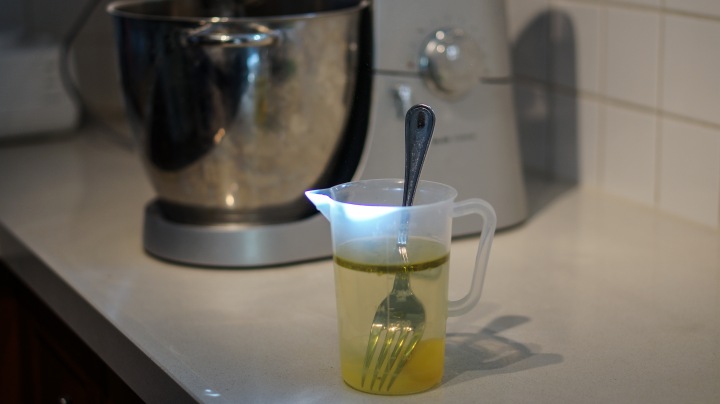
While the stand mixer is mixing the dry ingredients, combine the water, egg, and oil and beat with a fork until well mixed.
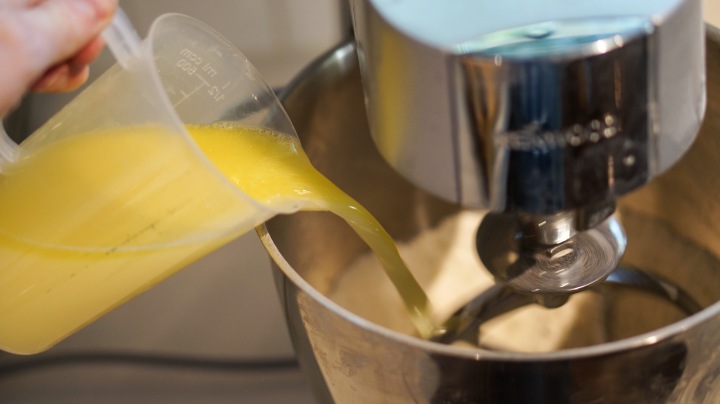
Add the wet ingredients to the dry ingredients with the mixer running.
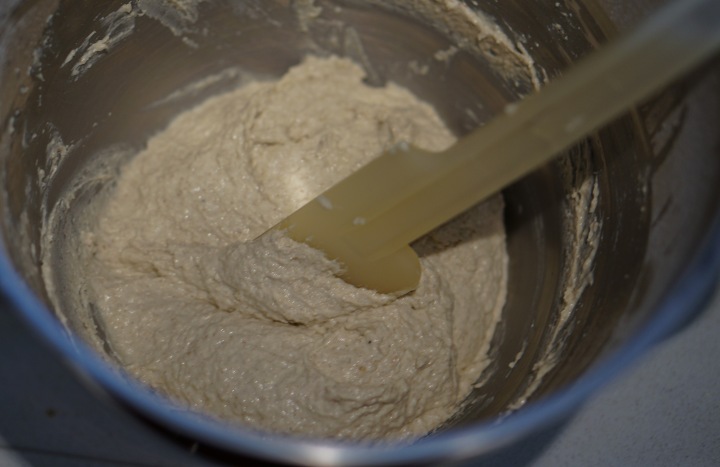
Mix until the batter is homogeneous.
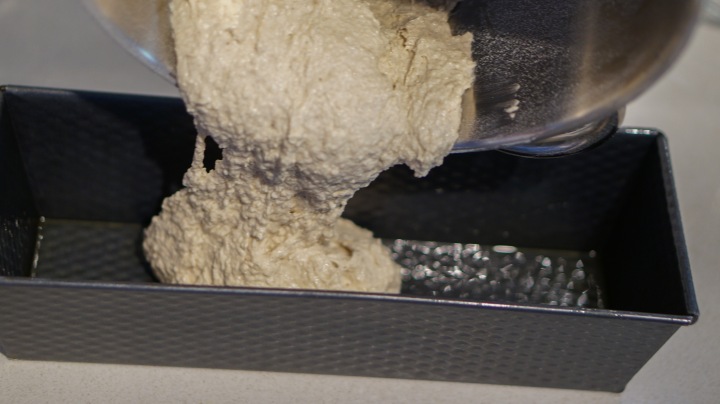
Pour the batter into the oiled pan.
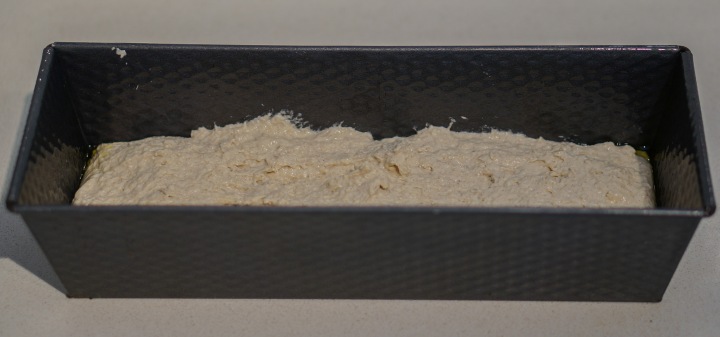
Flatten the batter in the pan with a spatula.

Cover the pan with a kitchen towel and put it in the oven with the light on and the door closed. Allow to rise for an hour; it should double in volume.
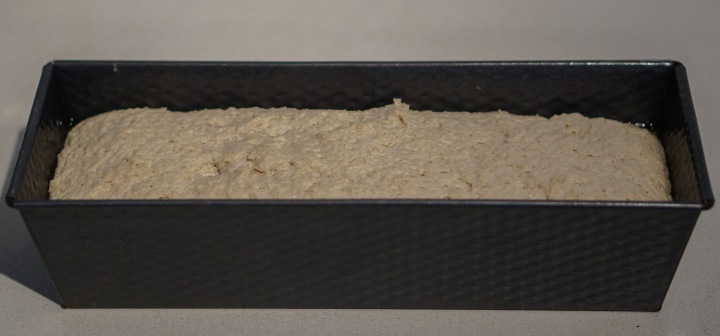
Once it has risen, take it out of the oven (keep it covered with the kitchen towel) and preheat the oven to 225ºC/440ºF (not fan forced).

Once the oven has preheated, bake the gluten free bread for 30 minutes at 225ºC/440ºF (not fan forced).

Allow to cool somewhat before taking it out of the pan; you may need to run a knife along the edges to get it out.

Unlike bread with gluten, you can slice it right away while it is still warm.
Flashback

Making a hamburger from scratch (grinding the beef, baking the buns, making the ketchup), is a lot of work but also a lot of fun and worth the trouble.

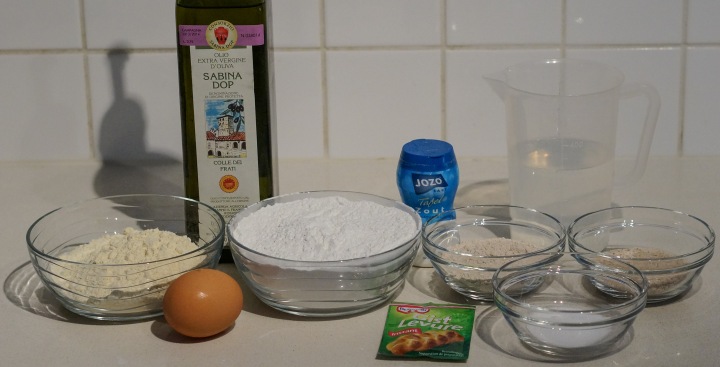


proverò fare questo pane per mia figlia Anna perchè ha un’intolleranza al glutine. Spero di trovare la farina di quinoa.
LikeLike
Si può sostituire la farina di quinoa con altre farine come scritto. Penserei che trovare la mucillagine di psillio fosse più difficile?
LikeLike
penso anch’io ma proverò cercare
LikeLike
What a lovely load. GF is hard but it looks like you nailed it.
LikeLike
Thanks, Connie.
LikeLike
Pretty perfect structure and a very even crust. Well done Stefan.
LikeLike
Thanks, Conor. I’m curious what my gluten free guest will think about it.
LikeLike
How do you know if you are gluten intolerant? I mean it’s bad enough I can’t just stuff my face with anything i fancy without piling on the pounds – the thought of having to avoid specific things – sends shivers down the spine!
LikeLike
If you have a strong intolerance, I’m pretty sure you’d already know as you’d get pretty sick from eating bread or pasta. I know where you are coming from — I’d hate to not be able to eat everything!
LikeLike
Yes Im glad i dont have intolerances. Especially vino! At least I dont think i do. Maybe I do! And I just dont realise it…
LikeLike
I honestly do NOT mean to be a ‘spoilsport’ but most people who these days eat the ‘gluten free’ diet do NOT need it!! Not unless they have been proven to have coeliac disease – less than 2% of us!!!! What many do not realize is that besides the higher price tag ‘gluten free’ robs one of many vitamins like C, Calcium, B complex etc and leads to a much worse health situation in other ways!! Oh, you do not have to believe me: begin with the ‘Mayo’ University writings and go on from there . . . So much valid info available!!!!!!
LikeLike
I’ve noticed this too — I don’t even remember ever hearing of gluten free when I was a kid. The friend who is coming over does actually gets sick when she eats gluten.
LikeLike
Thanks for not ‘getting angry’ at my comment – over 25 years of studying the subject at a tertiary level does make one a ‘preacher-man’ [or -woman] trying to bring the facts to the majority. Oh yes, a lot of people cannot have gluten . . . but an unwarranted money-making industry has grown up around it and that makes me ‘mad’!!!! good wishes from the Antipodes . . .
LikeLike
Just found it! The loaf looks good Stefan. How was the mouth feel/texture? That is the main bug bear for me with gluten free bread
LikeLike
The texture was very nice. Not like ‘real’ bread, but soft and flexible enough. Certainly not a brick. It reminded me a bit of German sourdough bread, but not sour and softer.
LikeLike
Thanks, I’ll give it a try, I think using psyllium husks really helps.
LikeLiked by 1 person